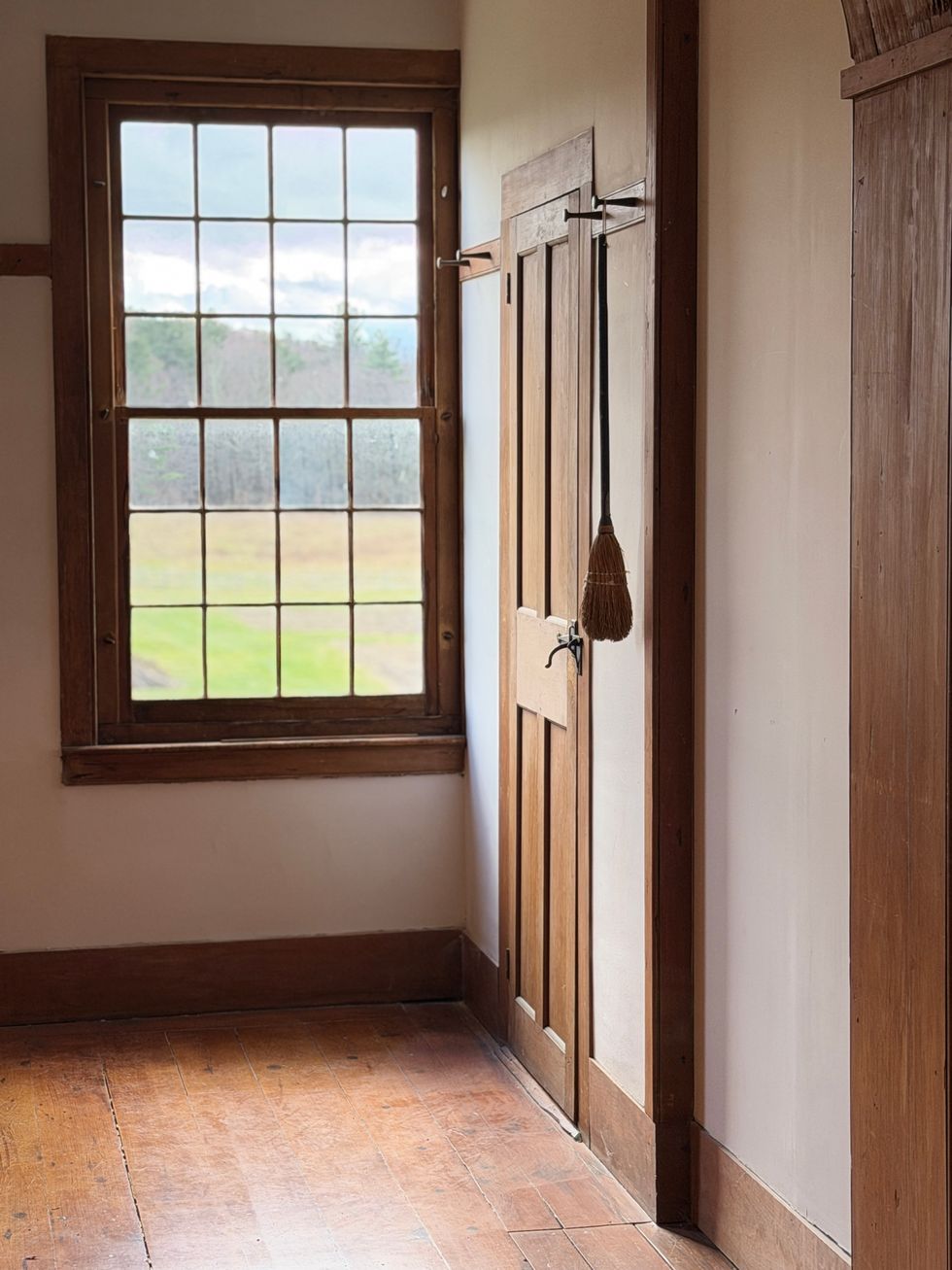From Mohawk to Revelstoke: Cornwall ski crew embarks on multi-generational journey

The group — minus Garrick Dinneen, who’s taking the photo — stops for a mid-run rest.
Provided

The group — minus Garrick Dinneen, who’s taking the photo — stops for a mid-run rest.
CORNWALL — This past winter, an intergenerational group of Mohawk Mountain skiers took their hard-earned East Coast skills to the towering peaks of interior British Columbia for a ski trip that went beyond just pursuing the steep and deep.
“As fun as the skiing was, the lift rides and even just going home and cooking dinner together and talking was a pretty cool part of it,” said 24-year-old Cornwall native Dean Saccardi of the nearly 20-day voyage. “To have that age range of people who had grown up in Cornwall, went to [Cornwall Consolidated School], and had all their stories about the school, about the ski program, about the community … it definitely made the trip.”
Jim Terrall, who runs a building company in Cornwall, grew up skiing at Mohawk about 50 years before Saccardi got his start through the after-school CCS ski program, which lets students out at noon on Fridays to go skiing during a stretch of the winter. Terrall grew up going to Mohawk the same way, and estimated that the group on the trip spanned 1960-2017 of the CCS ski program.
“My winters were spent at Mohawk” said Terrall, “as were my kids’ winters.”
He said Mohawk Mountain and the CCS ski program have had an outsized impact on building a unique love for downhill snow sports in the town: “A lot of Cornwall kids are skiers because of the program,” which continues to this day — minus the included season pass of years past.
After graduating from Colorado College, Terrall moved to Jackson Hole, Wyoming, with the intention of working a ski season or two, and ended up staying for 15 years.
Terrall’s son Keaton, who also joined the trip, is now a student at Montana State University in Bozeman and is as passionate about skiing as his father.
While a veteran of Western skiing, the elder Terrall said part of the fun of the trip was introducing Saccardi and his brother-in-law Garrick Dinneen, who had never skied outside of the Northeast, to bigger and steeper terrain.
Saccardi said the difference was immediately apparent. At the group’s first stop at Schweitzer Mountain in northern Idaho, “you could barely see the tips of your skis, it was so foggy,” Saccardi recalled. Even then, though, “you quickly appreciate how steep it is.”
Saccardi said that despite the initial adjustments, he and Dinneen were able to keep up well with the seasoned and skilled group. “It’s a testament to Mohawk Mountain and that program … Despite it being a little mountain, it does prepare you with the basics and everything you need to know.”
Josh Tyson, from the CCS class of 1981, who now runs a Cornwall excavating company, said that watching Saccardi and Dinneen get to experience Western skiing was a highlight of the trip for him.
“They became such better skiers in like a day,” he said. “Just the exposure to really steep and mogully trees — it’s not eastern skiing, you know, and they just figured it out right away and were great.”
Tyson’s son Ian joined too and the final member of the cohort was Andy Peterson, who grew up skiing with Terrall at Mohawk in the 1960s and now lives in Colorado, but still spends a few months in Cornwall every summer. As a group of seven, the skiers resort-hopped across southern British Columbia on an itinerary that would make even the most seasoned skier rage in jealousy.
Flying round trip to Missoula, Montana, the group hopped in a few cars and first stopped at Schweitzer in Idaho for a day of foggy skiing, before bouncing to Red Mountain just across the border, where they spent three full days, including the sole powder day of the trip — which was a blast, Tyson said. After that, the crew visited Whitewater, Kimberly, Panorama, and finally, famed powder-mecca Revelstoke, which was unfortunately mostly powder-free during their stay.
Their visit, which spanned the final week of February and first week of March, was uncharacteristically warm for the Canadian mountains.
“We skied in all types of weather, from dense fog to 18 inches of fresh snow to spring skiing,” said Tyson. Despite the variable conditions, “I didn’t hear one complaint the whole time,” said Terrall, reflecting fondly on the group’s positive attitude.
The Terralls and Peterson capped off the trip with a few days of heli-skiing in the mountains surrounding Revelstoke, where “you never cross another ski track” — including your own — said the elder Terrall.
Plans for another trip are already in the works for next year. The group is thinking a return to B.C. is in order, but with an emphasis on mountains they missed this round — Fernie, Kicking Horse, and maybe some more Revelstoke for good measure.
The community feeling remains, however, as those who still call Cornwall home settle back into Northwest Corner life.
Tyson said that since both he and Terrall are in the contracting business, they often run into each other on job sites alongside Dinneen, who is an electrician in town. Ian works for his father’s company, and Saccardi works for Terrall, further tightening the bond.
In his free time, Saccardi stays busy by serving on Cornwall’s Board of Education, a position he picked up after graduating high school and has held for nearly four years.
When asked about how he decided to take up a town service role at such a young age, he was quick to attribute it to Cornwall’s intrinsic community benevolence: “I think the town itself sort of has that culture.”
Sharon Center School
SHARON — A Sharon Center School staff member discovered a “facsimile firearm” behind a file cabinet around 2 p.m. Wednesday, Dec. 10, prompting an immediate response from State Police and a same-day notification to parents, according to police officials and an email obtained by The Lakeville Journal.
Melony Brady-Shanley, the Region One Superintendent, wrote in the email that, upon the item’s discovery, “The State Police were immediately notified and responded to the building.”
A canine team was brought in to sweep the building to confirm no additional items were present, “and the building has been fully cleared. The State Police consider this an isolated incident and not criminal in nature,” Brady-Shanley wrote.
State Police explained, “Troopers from Troop B - North Canaan were dispatched to the Sharon Center School for reports of a firearm located in a closet. The firearm was determined to be a non-firing, replica firearm... There was no threat to the school or the public.”
Brady-Shanley emphasized in the e-mail that “the safety and well-being of our students and staff remain our highest priority at all times. We will continue to follow and strengthen our safety protocols to ensure that our schools remain secure, supportive environments for learning.”
The Stone Round Barn at Hancock Shaker Village.
My husband Tom, our friend Jim Jasper and I spent the day at Hancock Shaker Village in Pittsfield, Massachusetts. A cold, blustery wind shook the limbs of an ancient apple tree still clinging to golden fruit. Spitting sleet drove us inside for warmth, and the lusty smells of manure from the goats, sheep, pigs and chickens in the Stone Round Barn filled our senses. We traveled back in time down sparse hallways lined with endless peg racks. The winter light was slightly crooked through the panes of old glass. The quiet life of the Shakers is preserved simply.

Originally founded in England, the Shakers brought their communal religious society to the New World 250 years ago. They sought the perfection of heaven on earth through their values of equality and pacifism. They followed strict protocols of behavior and belief. They were celibate and never married, yet they loved singing and ecstatic dancing, or “shaking,” and often adopted orphans. To achieve their millennialist goal of transcendental rapture, we learned, even their bedclothes had to conform: One must sleep in a bed painted deep green with blue and white coverings.
Shakers believed in gender and racial equality and anointed their visionary founding leader, Mother Ann Lee, an illiterate yet wise woman, as the Second Coming. They embraced sustainability and created practical designs of great utility and beauty, such as the mail-order seed packet, the wood stove, the circular saw, the metal pen, the flat broom and wooden clothespins.
Burning coal smelled acrid as the blacksmith fired up his stove to heat the metal rod he was transforming into a hook. Hammer on anvil is an ancient sound. My husband has blacksmithing skills and once made the strap hinges and thumb latches for a friend’s home.
Shaker chairs and rockers are still made today in the woodworker’s shop. They are well made and functional, with woven cloth or rush seats. In the communal living space, or Brick Dwelling, chairs hang from the Shaker pegs that run the length of the hallways, which once housed more than 100 Shakers.

In 1826, the 95-foot Round Stone Barn was built of limestone quarried from the land of the 3,000-acre Hancock Shaker Village. Its unique design allowed a continuous workflow. Fifty cows could stand in a circle facing one another and be fed more easily. Manure could be shoveled into a pit below and removed by wagon and there was more light and better ventilation.
Shakers called us the “people of the world” and referred to their farm as the City of Peace. We take lessons away with us, yearning somehow for their simplicity and close relationship to nature. One Shaker said, “There’s as much reverence in pulling an onion as there is in singing hallelujah.”
A sense of calm came over me as I looked across the fields to the hills in the distance. A woman like me once stood between these long rows of herbs — summer savory, sage, sweet marjoram and thyme — leaned on her shovel brushing her hair back from her eyes, watching gray snow clouds roll down the Berkshires.
More information at hancockshakervillage.org

Exterior of Lakeville Books & Stationery in Great Barrington.
Fresh off the successful opening of Lakeville Books & Stationery in April 2025, Lakeville residents Darryl and Anne Peck have expanded their business by opening their second store in the former Bookloft space at 63 State St. (Route 7) in Great Barrington.
“We have been part of the community since 1990,” said Darryl Peck. “The addition of Great Barrington, a town I have been visiting since I was a kid, is special. And obviously we are thrilled to ensure that Great Barrington once again has a new bookstore.”
The second Lakeville Books & Stationery is slightly larger than the first store. It offers more than 10,000 books and follows the same model: a general-interest store with a curated mix of current bestsellers, children’s and young readers’ sections; and robust collections for adults ranging from arts and architecture, cooking and gardening, and home design to literature and memoirs. Anne reads more than 150 new titles every year (as many as a Booker Prize judge) and is a great resource to help customers find the perfect pick.
A real-time inventory system helps the store track what’s on hand, and staff can order items that aren’t currently available. There is also a selection of writing and paper goods, including notecards, journals, pens and notebooks, as well as art supplies, board games, jigsaw puzzles and more. The owners scour the stationery trade shows twice a year and, Darryl says, “like to tailor what we offer to suit the interest of our customers in each market.”
The Pecks know what it takes to run a successful local enterprise. Darryl has a 53-year background in retail and has launched several successful businesses. He and Anne owned and operated a bookstore on St. Simons Island, Georgia, from 2019 to 2025. They are tapping into their local roots with both stores. They raised their family in Sharon, and their daughter Alice, a native of the Northwest Corner, manages the Lakeville store.

The family values the role that a retail store plays as a supporting partner in the community, and they prioritize great management in both locations, hiring and training talent from local communities. Their 10 team members across both stores are from the area, and two of the Great Barrington employees previously worked at Bookloft.
Darryl and Anne’s attention to customer service is everywhere apparent and adds to the enjoyable and irreplaceable in-store shopping experience. The books are in pristine condition, eliminating the risk of damage that sometimes occurs during shipping. This is especially important for books that will live on people’s shelves and coffee tables for years.
Darryl says, “People love the in-store discovery — you find books you didn’t know existed, which is very difficult to do on a website. Also, many customers depend on our recommendations when visiting. There is a saying about bookstores versus online ordering: We may not have exactly what you were looking for, but we have what you want.”
Lakeville Books & Stationery’s Great Barrington store is open 7 days a week, Monday-Saturday, 10 a.m. to 6 p.m., and Sunday, 11 a.m. to 5 p.m. Parking is available in the lot behind the building and in the parking lot behind the firehouse. The entrance to the store is accessible from the store parking lot.
For more information, go to lakevillebooks.com., and sign-up for the Lakeville Books newsletter.
Richard Feiner and Annette Stover have worked and taught in the arts, communications, and philanthropy in Berlin, Paris, Tokyo and New York. Passionate supporters of the arts, they live in Salisbury and Greenwich Village.